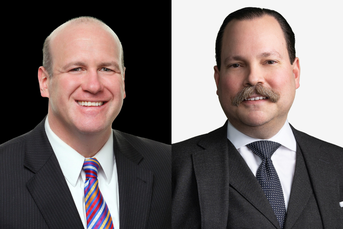Who’s spending what on political candidates?
With Senate control at stake in tomorrow's election, interest groups representing the brokerage and insurance industries are spending substantially more than financial adviser groups, and are adding to their lead.
In advance of voters going to the polls tomorrow to determine control of the Senate, brokerage and insurance industry interest groups have increased their political contributions while financial adviser organizations are holding steady at substantially lower levels.
During the election cycle that began in January 2013 and will conclude at the end of this year, the Investment Adviser Association contributed $34,000 to lawmakers’ campaigns through Sept. 30, according to the Federal Election Commission. In the 2012 election, the group spent $25,000, and in the last mid-term elections in 2010, it spent $33,500.
The Financial Planning Association has made $58,500 in contributions for the 2014 campaign through Oct. 15, according to the FEC. That is down from $74,450 in 2012 and up from $44,500 in 2010.
The money for political contributions comes from the members of an interest group and is distributed through its political action committees.
“In this two-year cycle, we were less active during the first part, as our board reviewed our disbursements and where we should put emphasis in terms of both the House and Senate,” Karen Nystrom, FPA director of advocacy, wrote in an email. “We will also be taking a close look at the results of the election in terms of our continued contribution from the FPA PAC.”
The FPA and IAA are far outdistanced by the brokerage and insurance industries. The National Association of Insurance and Financial Advisors has spent a total of $2.3 million on 2014 campaigns through Oct. 15, according to the FEC. That is an increase from $1.7 million in 2012 and 2010.
The Securities Industry and Financial Markets Association has contributed $830,000 to 2014 campaigns through Oct. 15, according to the FEC. That is an increase from $609,500 in 2012 and $550,500 in 2010.
The Investment Company Institute, which mostly represents mutual fund companies, also is a big election spender. It has contributed $1.8 million to 2014 campaigns, according to the FEC, an increase from $1.6 million in 2012 and $1.4 million in 2010.
The Financial Services Institute, which represents independent broker-dealers and financial advisers, also has boosted its election spending. It has contributed $266,000 to 2014 campaigns as of Oct. 15, according to the FEC. That’s up from $168,000 in 2012 and $72,000 in 2010.
Giving to lawmakers’ campaigns is a way for the groups to build relationships and help ensure they can influence the development of legislation.
“That is the primary reason I would like us to grow our PAC in the years ahead,” said Neil Simon, IAA vice president for government relations. “Given the challenges that advisers will be facing, it is important that we strengthen our advocacy program in every way.”
Political spending tends to favor incumbents, even in a year like this one where several veteran Democratic senators are vulnerable. Washington interest groups rarely give money to challengers.
The spending also is targeted at lawmakers who sit on the House Financial Services and Senate Banking committees, the two panels with jurisdiction over most policy that affects advisers and brokers.
For instance, the IAA gave $4,000 to Rep. Scott Garrett, R-N.J., chairman of the House Financial Services Subcommittee on Capital Markets and Government Sponsored Enterprises, and $2,000 to Sen. Mark Warner, D-Va., who chairs the Senate Banking Subcommittee on Securities, Insurance and Investment.
The FPA gave $2,000 to Rep. Jeb Hensarling, R-Texas, chairman of the House Financial Services Committee. It gave $2,500 to Sen. Kay Hagan, D-N.C., a member of the Senate Banking Committee who is in a tight race to hold onto her seat in a campaign that could help determine whether Democrats maintain control of the chamber. Democrats currently hold a 55-45 Senate advantage, when independents who caucus with the party are included.
The FPA also gave $2,500 to Sen. Richard Shelby, R-Ala., who is in line to become the Senate Banking Committee chairman if Republicans take the Senate.
The NAIFA has given 62% of its contributions to Republicans and 38% to Democrats, according to the Center for Responsive Politics. SIFMA has distributed its contributions in the same way.
The ICI gave 64% of its donations to Republicans and 36% to Democrats.
“ICI PAC is highly regulated and supports policy leaders in both parties in Congress who understand the fund industry and shareholder issues,” Rachel McTague, an ICI spokesperson, said in a statement. “Such leaders promote sound, transparent fund regulation and efforts to enable Americans to save for important life goals.”
The IAA, FPA and FSI maintain approximately an even split between GOP and Democratic donations.
Learn more about reprints and licensing for this article.








